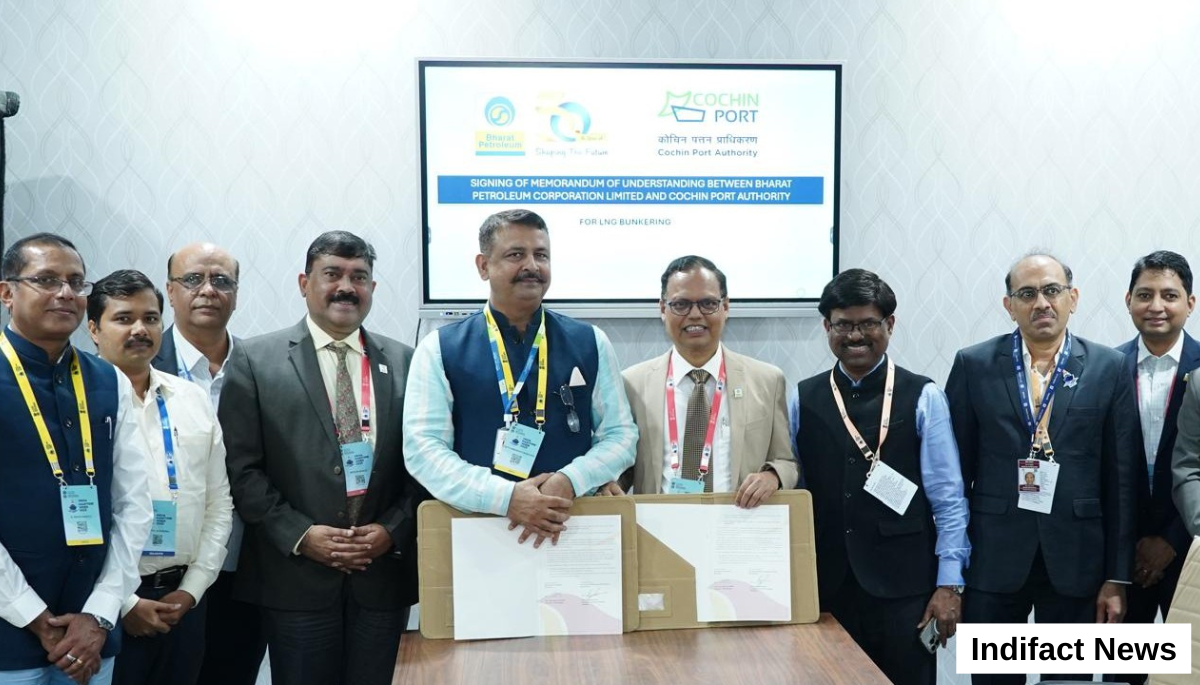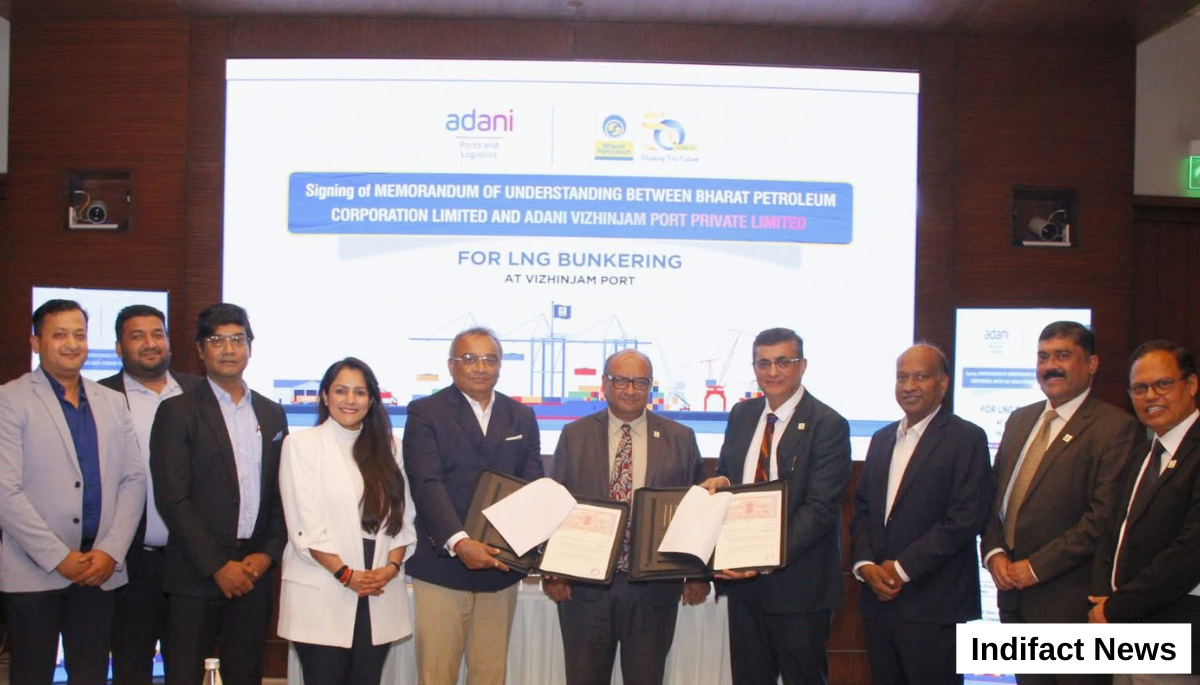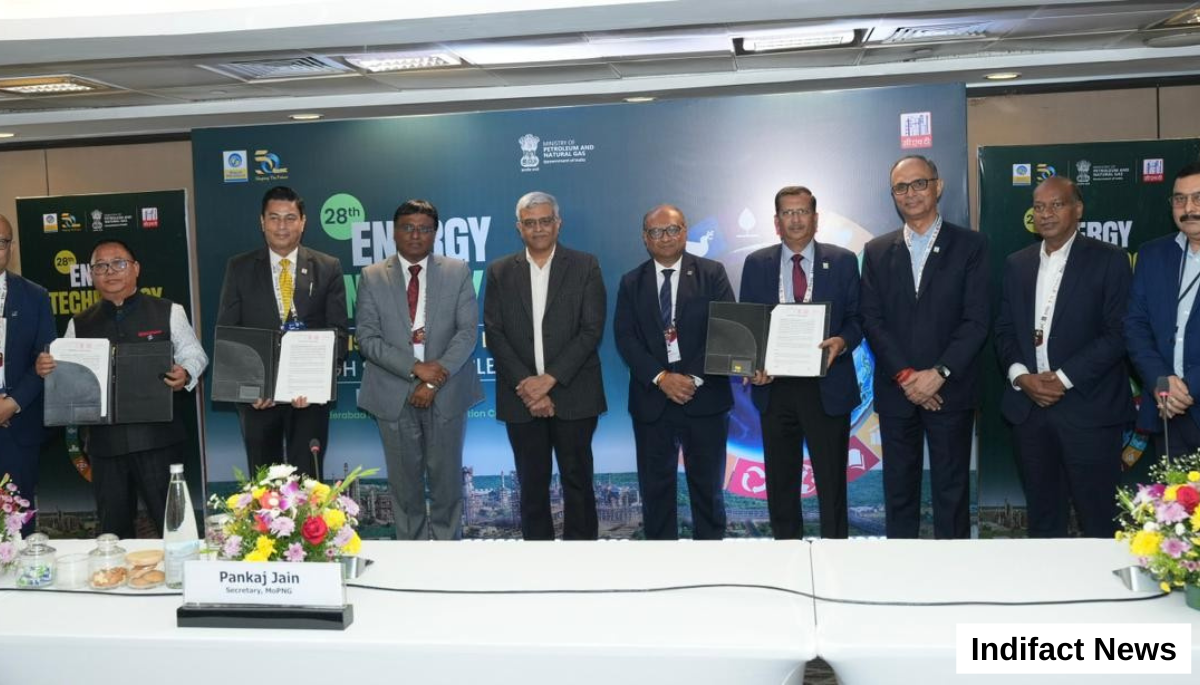
BPCL Share Price Forecast
Imagine an ocean liner vast, powerful, and central to global trade attempting a high-speed pivot towards entirely new waters. That is the essence of Bharat Petroleum Corporation Limited (BPCL Share Price Forecast) today. This Maharatna energy giant is not just selling fuel; it is navigating a perfect storm of volatile global crude markets, unpredictable government policy, and a massive, existential shift toward green energy.
For investors monitoring the BPCL Share Price Forecast scrip, currently hovering around the crucial ₹356.80 mark as of late October 2025 , the immediate focus is a stunning 169% jump in quarterly profits. But scratch the surface of these blockbuster results, and a complex picture emerges: one dominated less by global oil fundamentals and more by policy buffers, non-core gains, and a visionary, yet fiercely contested, multi-decade capital expenditure plan.

This report dissects the recent financial performance, unpacks the hidden risks lurking in regulatory shadows, and evaluates whether BPCL’s colossal future investments truly justify its current valuation and its ambitious strategic trajectory.
Opening Shot: The ₹356 Question and the Q2 Profit Tsunami
The stock’s immediate movement tells a story of cautious momentum. After opening October 31, 2025, at ₹358.00 on the NSE, BPCL Share Price Forecast saw marginal consolidation, closing slightly lower at ₹356.80. However, this stability follows a robust short-term surge: the stock advanced 5.03% over the past month and 8.35% over the past three months, placing it just shy of its 52-week high of ₹361. Investors are clearly anticipating major news, and the company delivered.

The Big Number: Deconstructing the 169% Q2 FY26 Net Profit Surge
The headline figures from BPCL Share Price Forecast’s Q2 FY26 results were nothing short of explosive. The company reported a consolidated net profit of ₹6,191.49 crore to ₹6,443 crore , representing a staggering 169.52% increase year-on-year (YoY) from the previous fiscal year’s corresponding quarter.
However, the revenue story was far more muted. Revenue from operations rose only 3.10% YoY, reaching ₹1,21,604.70 crore. This significant divergence between marginal revenue growth and exponential profit growth immediately flags a critical analytical question: If the top line is only inching up, where did the profits surge come from?
The BPCL Share Price Forecast board, signaling confidence in the company’s immediate cash position and profitability, also approved a significant interim dividend of ₹7.5 per equity share for FY26. This decision confirms a strong liquidity flow, regardless of the source of the profit.
The Golden Barrel Debate: Separating Signal from Noise (GRM Quality)
The BPCL Share Price Forecast answer to the profit mystery lies in the performance of the refining segment, measured primarily through the Gross Refining Margin (GRM) the profit earned from turning a barrel of crude oil into refined products.

BPCL Share Price Forecast proudly reported a Gross Refining Margin (GRM) of an impressive $10.78 per barrel for Q2 FY26. This figure stands in sharp contrast to the previous year’s Q2 GRM of $4.41 per barrel. Management cited this powerful refining performance, coupled with “better marketing inventory gains,” as the drivers of the improved profitability.
But here is where investors must apply the analytical scalpel: GRMs reported during volatile crude cycles often include substantial inventory gains. These gains occur when the price of crude oil rises between the time the crude is purchased and when the refined products are sold. This is a one-time windfall, not repeatable core operational efficiency.
The BPCL Share Price Forecast critical metric to look at is the half-year performance. The average GRM for the first six months of FY26 (H1 FY26) stood at a more grounded $7.77 per barrel. This H1 average suggests that the core, repeatable operational GRM is closer to the $7–8 range, implying the $10.78 figure was significantly inflated by transient inventory effects. Therefore, while the 169% profit surge provides immediate cash and justifies the strong dividend, modeling future earnings must be based on a discounted, lower, and more sustainable core refining margin. The market recognizes that this profit base is transient, which explains why the stock has not rocketed past the ₹400 mark despite the headline numbers.
The Structural Foundation: Core Margins and the Policy Paradox
In a globally competitive, BPCL Share Price Forecast capital-intensive business like oil refining, stability often comes from diversification. For Indian Oil Marketing Companies (OMCs) like BPCL, this stability is less about geographical spread and more about the interplay between their refining arm and their expansive fuel marketing network.
The Indian OMC Safety Net: Robust Marketing Spreads
Unlike international refiners who rely almost exclusively on the crack spread (the difference between the price of crude and the refined product), BPCL Share Price Forecast and its peers benefit from controlled, yet highly profitable, marketing spreads that act as a crucial structural buffer.
Despite global GRMs softening falling to $4.88 per barrel in Q1 FY26 from a high of $9.20 per barrel in the preceding quarter BPCL’s overall profitability increased. This confirms the dominance of the marketing segment in generating consistent earnings.
The BPCL Share Price Forecast gross Marketing Margins (GMMs) achieved in FY26 year-to-date have been exceptionally strong: Petrol is generating margins of ₹11.7 per litre, and Diesel is fetching ₹9.4 per litre. These wide margins, facilitated by strong domestic demand and favorable price mechanisms (when they are allowed to operate freely), provide a reliable cash flow even when global refining crack spreads narrow. This robust marketing engine is the essential foundation of the company’s financial strength and its ability to withstand volatility in crude input costs.
Competitive Positioning and Market Command
BPCL Share Price Forecast is one of India’s three dominant downstream public sector undertakings (PSUs), all operating under the Ministry of Petroleum and Natural Gas, with the Central Government holding a majority stake (>50%). It operates the second-largest network in India, trailing only Indian Oil Corporation (IOCL), in both fuel distribution and refining capacity. BPCL’s specific competitive advantage lies in its strong retail presence in major metro cities and strategically important Tier 2 towns across the subcontinent. Since all three majors offer nearly identical product portfolios including petrol, diesel, LPG, jet fuel, and petrochemicals the market battle often revolves around retail network expansion and operational efficiency.
The Sword of Damocles: Government Intervention and Price Freeze
While the marketing arm is a structural pillar of profitability, it is also the segment most exposed to political risk. The policy environment governing BPCL Share Price Forecast’s operations is defined by two conflicting forces: financial stabilization and direct market intervention.
The Frozen Pump Price Paradox
The most pressing risk for BPCL Share Price Forecast is the domestic fuel price freeze. Despite rhetoric favoring market-linked pricing, prices for domestic petrol and diesel have remained effectively frozen since mid-March 2024, when they were last cut by ₹2 per litre, likely ahead of general elections. This political restraint acts as an artificial ceiling on BPCL’s profits. Although the company is currently enjoying massive GMMs (₹11.7/L for Petrol) , the continued price freeze means that any future surge in crude oil input costs would force OMCs to absorb the higher expense, directly compressing their margins, exactly as they have done in past cycles.
Furthermore, BPCL Share Price Forecast the uncertainty is compounded by recent signals. India’s Oil Minister has indicated that a possible decrease in fuel prices could be on the horizon if global crude oil prices stabilize over a period of 60 to 90 days. The mere discussion of a price cut, even when the current market mechanism is frozen, demonstrates that the government retains significant, decisive control over the final consumer price. The inability to fully pass on costs or reap the benefits of high marketing efficiency is a fundamental headwind that makes BPCL difficult to value using purely free-market metrics.
The Volatile Windfall Tax (WPT)
Another significant policy variable is the Windfall Profit Tax (WPT). Originally introduced in mid-2022 to tax unexpected profits derived from global geopolitical uncertainty , the WPT has been a roller coaster for OMCs. While the Government of India officially abolished the WPT on crude oil effective December 2, 2024 , its history shows persistent volatility. For example, the tax on petroleum crude was hiked to ₹7,000 per metric tonne as recently as July 15, 2024 , despite earlier reductions. The constant, fortnightly revisions and the sudden re-introduction of the tax even if later rescinded demonstrates a non-market driven mechanism that can instantly claw back refining profitability. This policy ambiguity introduces a major element of risk premium into the BPCL Share Price Forecast stock price.
The Compensation Tailwind
On a positive note, the government has moved to address long-standing liabilities related to subsidized products. BPCL Share Price Forecast’s accumulated under-recoveries on the sale of domestic liquefied petroleum gas (LPG) stood at ₹13,672 crore as of September 30. The government has committed to compensating the company with ₹7,594 crore, to be paid in 12 equal monthly installments starting in November 2025. This infusion of compensation is a material positive for the company’s balance sheet and operational cash flow, offsetting a portion of the historical marketing burden.
The policy environment thus presents a contradiction: the government is simultaneously stabilizing the company (by paying old debts) and destabilizing its future earnings potential (by capping future upside and retaining the right to tax unexpected profits). The core risk is the timing: any return to sustained high crude prices could see a renewed price freeze or tax intervention imposed, hindering BPCL Share Price Forecast‘s ability to maintain its high margins.
Regulatory Headwinds and Tailwinds Impacting BPCL (FY24-FY26)
| Policy Mechanism | Current Status (Late 2025) | Financial Impact (Short-Term) | Source Reference |
| Domestic Fuel Price Freeze | Unchanged since mid-March 2024 | Caps potential upside on high GMMs, forcing OMCs to absorb input cost volatility. | |
| Windfall Tax (WPT) on Crude | Highly volatile; officially abolished (Dec 2024), but frequently revised in the past. | Direct risk to refining realization, impacting inventory gains and export potential. | [12, 13] |
| LPG Under-recovery Compensation | ₹7,594 Cr to be paid starting Nov 2025 | Material improvement in cash flow and reduction of accumulated marketing burden. |
Project Aspire: The Green Pivot—A Multi-Decade Transformation
If the policy environment determines BPCL Share Price Forecast‘s current valuation, its capital expenditure program defines its relevance in 2035. The company’s future is irrevocably tied to “Project Aspire,” a colossal, multi-pronged investment plan valued at an unprecedented ₹1.7 Lakh Crore. This program is described as nurturing the core (refining and marketing) while simultaneously placing “future big bets” on energy diversification.
This massive Capex is not merely about maintenance; it is a defensive strategy designed to ensure the company’s survival and competitiveness as India accelerates its transition away from pure fossil fuels.
Deepening the Value Chain: The Petrochemical Promise
A primary focus area for Project Aspire is the integration and expansion of BPCL Share Price Forecast’s petrochemical capacity. The company aims to raise its petrochemical capacity significantly to 3.2 million metric tonnes (MMT).
This is a critical strategic move away from highly commoditized petrol and diesel products. By expanding into petrochemicals, BPCL is moving up the value chain toward specialized, higher-margin products. The company projects that this segment will contribute approximately 8 percent of total revenue by FY29. Given that refining operations currently contribute the majority of revenue (65.4% of total revenue in FY 2022-23), shifting the revenue mix toward higher-margin, specialized petrochemicals is crucial for achieving sustainable margin improvement and reducing exposure to volatile fuel pricing.
Leading the EV Race and Multi-Energy Stations
BPCL Share Price Forecast is tackling the electric vehicle (EV) disruption head-on by actively repositioning its expansive retail network. Its goal is to transform traditional fuel pumps into “multi-energy stations,” offering a comprehensive energy portfolio that includes Compressed Natural Gas (CNG), Liquefied Natural Gas (LNG), EV charging, and battery swapping services.
In a testament to its commitment, BPCL Share Price Forecast currently operates over 6,500 EV charging points, which represents the highest density among all Indian Oil Marketing Companies. This proactive leadership provides BPCL with a critical first-mover advantage. The retail network is an invaluable asset, and by rapidly converting existing pumps into multi-energy hubs, BPCL is effectively future-proofing its prime real estate. This strategy secures recurring revenue streams from the mobility sector, even as internal combustion engine (ICE) vehicle usage declines over the next decade.
Hydrogen and Renewables: The Long-Term Bet
The BPCL Share Price Forecast furthest horizon of Project Aspire involves deep diversification into sustainable energy sources. BPCL has established an ambitious target of achieving 10 GW of green energy capacity by 2035. This long-term commitment includes substantial investment in nascent technologies like green hydrogen.
Pilot projects are already yielding results and informing future deployment strategies. A 5 MW green hydrogen plant is operational at the Bina refinery, and an integrated green hydrogen plant coupled with a refueling station is actively being developed near Kochi. Furthermore, the company has awarded contracts for a 100 MW wind farm project (split between Madhya Pradesh and Maharashtra), with targeted commissioning within two years. These initiatives demonstrate a tangible commitment to the energy transition, moving beyond mere announcements.
The Great Disconnect: Ambition vs. Analyst Skepticism
Despite the monumental scale of the ₹1.7 Lakh Crore Capex plan , a profound contradiction exists between management’s ambition and the market’s calculated expectation.
Consensus analyst forecasts indicate that BPCL is expected to deliver a median EBITDA (Earnings Before Interest, Taxes, Depreciation, and Amortization) growth of 0.0% over the next five fiscal years. This zero-growth forecast, alongside a current year forecast showing -9.5% growth , stands as a stunning rebuttal to the colossal investment.
If ₹1.7 Lakh Crore were genuinely viewed as high-return, multi-year growth capital expenditure, market forecasts would certainly reflect positive, accelerating earnings growth. The prevailing zero-growth outlook signals that analysts perceive this investment primarily as maintenance and defensive capital expenditure. In this view, the massive spending is required simply to maintain the company’s current operational footing, to offset the anticipated structural decline in core fossil fuel margins, and to ensure future compliance and relevance. In essence, the market believes BPCL is running extremely hard just to stay in the same place for the near-to-medium term.
Valuation and Forecast: Gauging the Headroom
The BPCL Share Price Forecast ultimate question for investors is whether the current price reflects the company’s strong financial output or its structural risks. The consensus view among institutional analysts provides a sober assessment, suggesting that much of the recent Q2 strength is already factored into the price.
The Consensus Ceiling: Limited Upside
A BPCL Share Price Forecast review of projections collected from approximately 30 analysts paints a constrained picture for the next 12 months. The average 12-month price target for BPCL ranges between ₹372.87 and ₹379.41. Relative to the current trading price of ₹356.80, this implies a potential upside of approximately +4.50% based on the average target.
This minimal forecast upside indicates that, while the Q2 results were strong, the market does not view this performance as fundamentally transformative. The stock is being traded as a cyclical play a bet on strong operating conditions (high GMMs, favorable inventory cycle) that will likely stabilize, rather than a multi-year growth investment warranting higher multiples.
The Range of Opinion and Latent Catalysts
While the average forecast is modest, the BPCL Share Price Forecast analyst estimates present a wide spread, reflecting the high degree of uncertainty inherent in the PSU energy sector. The low estimate for the stock remains cautious, settling between ₹240 and ₹242.40. This lower-bound valuation likely reflects a scenario where the domestic fuel price freeze is rigorously maintained or re-imposed during a period of rising global crude prices, leading to severe margin compression.
Conversely, the high estimate reaches an ambitious ₹460 to ₹477.75. This valuation is typically tied to the successful, aggressive execution of the Capex plan or, more likely in the short term, a sustained period of regulatory clarity. Any formal confirmation of a complete and irreversible end to the domestic fuel price freeze, or a guarantee of sustained freedom from WPT revisions for a period longer than six months, would act as an immediate, sharp catalyst. Such a policy shift would unlock the latent cash flow potential currently being capped by the price freeze, justifying a sudden rerating towards these higher targets.
The EBITDA Multiples Conundrum
The valuation debate is underscored by the company’s projected earnings growth compared to its peers. BPCL Share Price Forecast’s valuation metrics, including Price-to-Earnings (P/E) and Enterprise Value-to-EBITDA (EV/EBITDA) multiples , treat the company like a mature, yield-generating utility rather than a high-growth entity.
BPCL’s forecasted EBITDA growth of -9.5% (current fiscal year) is better than Hindustan Petroleum Corporation Ltd’s severe forecast of -40.7%. However, it lags significantly behind sector leader Indian Oil Corporation Ltd, which is forecasted for an impressive +45.4% growth. This divergence suggests that while BPCL is managing risks better than some, it is not currently positioned to capture the sharpest rebound or growth premium within the public sector energy space.
The Investor Roadmap: Navigating the Next Five Years and Conclusion
BPCL Share Price Forecast stands at the intersection of cyclical opportunity and structural transformation. Understanding the risks and rewards requires a clear differentiation between the immediate trading environment and the multi-decade strategic vision.
Key Risks to Monitor (The Bear Case)
Policy Recidivism: The highest risk remains the re-imposition of a mandated, sustained price freeze on domestic petrol and diesel, which would force the company to absorb rising crude costs. This, coupled with renewed volatility in the Windfall Tax , could instantly compress the high Gross Marketing Margins that currently support profitability, Execution Failure and Debt Burden: The sheer magnitude of the ₹1.7 Lakh Crore Capex plan creates substantial execution risk. The zero-percent EBITDA growth forecast confirms market skepticism. If the long-gestation projects such as the 10 GW green energy target by 2035 fail to generate positive cash flow or returns quickly enough, the investment could transform into a significant debt burden, leading to sustained margin pressure and potential downgrades, Crude Price Collapse: Although the primary focus is on government policy, a sharp, sudden collapse in global crude prices would immediately reverse the substantial inventory gains that boosted Q2 FY26 profits , leading to a rapid sequential decline in earnings.
The Evergreen Bull Thesis
Proxy for Indian Growth: BPCL Share Price Forecast remains a core proxy for India’s powerful economic trajectory and unstoppable growth in energy consumption. Its extensive and irreplaceable retail network (the second largest in India) guarantees consistent high volumes across diverse consumer and industrial segments.
Dividend Yield and Stability: As a state-owned Maharatna company, BPCL’s primary function often transcends pure profit maximization, ensuring stable dividends and reliable shareholder returns. This status is supported by the consistent cash generated by its marketing spreads and periodic government assistance (such as the recent LPG under-recovery compensation) , making it an attractive yield asset for income-focused investors
First-Mover Advantage in EV: BPCL’s aggressive lead in establishing the highest number of EV charging points (>6,500) positions it uniquely among its peers to capture initial market share in India’s electric mobility shift. This strategy minimizes the threat of retail network obsolescence and establishes a crucial foothold for future revenue diversification.
Final Synthesis: Safe Harbor or High-Octane Growth?
BPCL Share Price Forecast, in the short-term (12 months), is predominantly a cyclical value play. The recent profit surge, while impressive, is based on non-recurring inventory gains and strong, but politically precarious, marketing margins. The conservative analyst target of only 4.50% upside suggests that the current price already incorporates the expectation of continued regulatory policy risk. Investors buying today are primarily betting on the cycle not turning sour and receiving a predictable dividend yield.
In the long-term (5–10 years), BPCL Share Price Forecast is a complex energy transition story. The high Capex is a multi-decade bet on its ability to execute Project Aspire to pivot its core business successfully toward petrochemicals, EV infrastructure, and 10 GW of renewables. This is a strategic imperative for survival. The market’s 0% projected EBITDA growth for the coming years indicates that investors are currently skeptical that this transition will generate meaningful capital appreciation premium over and above the costs required to adapt.
The ultimate determination of BPCL Share Price Forecast’s share price trajectory depends on which force proves stronger: the stability offered by India’s soaring energy demand and the government-backed dividend flow, or the unpredictable policy risk that dictates when, and how, the company is allowed to realize its full profit potential. Until regulatory stability is achieved, BPCL will remain a fascinating, high-yield investment defined by the tug-of-war between its massive core business and its colossal green aspirations.







